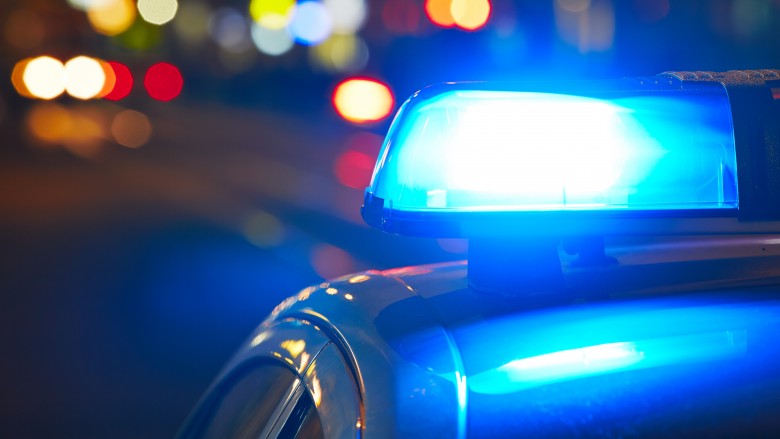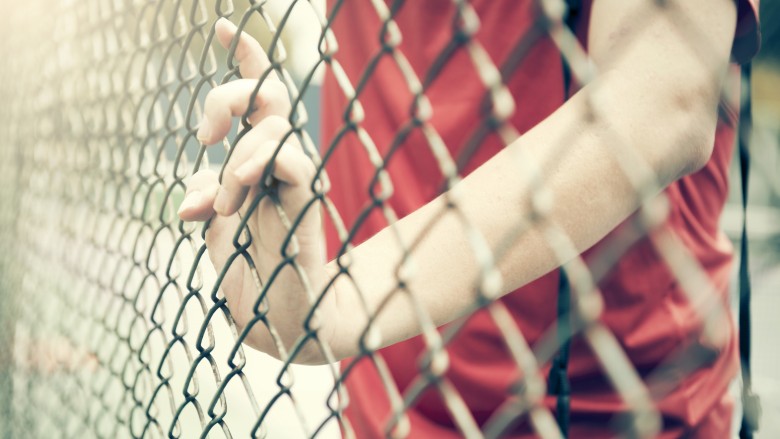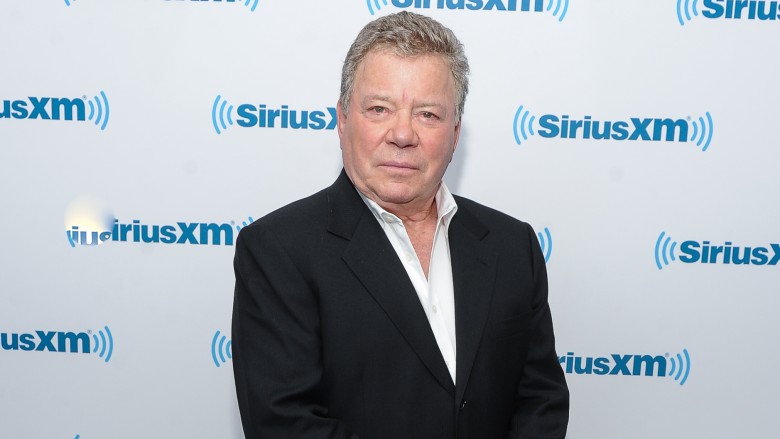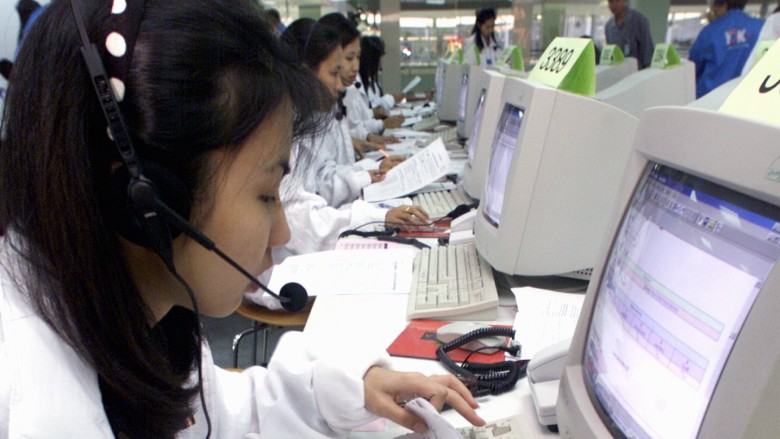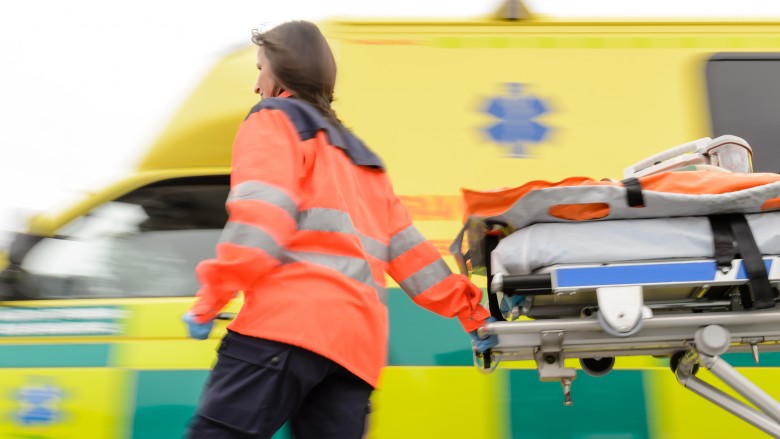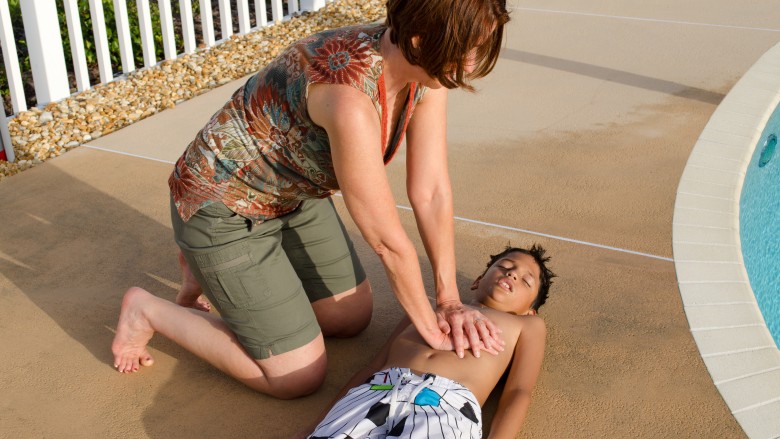The Untold Truth Of Rescue 911
We may receive a commission on purchases made from links.
The late '80s-early 90s' hosted a boom of real crime shows full of reenactments and hosts with gravitas. Right in the middle of that boom was Rescue 911, everyone's favorite show about EMT workers and William Shatner. Though it seems corny now, the show was groundbreaking, and left behind quite a legacy.
The creator of Cops pitched the idea of a reality 911 show, and was rejected
Before Cops came to be, John Langley pitched a whole host of potential reality shows to nearly every studio in Hollywood, and was completely rejected (unlike today, when they'll greenlight a reality show about literally anything). He finally got a meeting with Steve Chao at Fox and pitched a few reality shows that he really believed in: one about funny home videos, one about what really happens when you call the cops, and another following rescue workers on 911 calls. Chao didn't like any of the ideas — of the 911 one he said, "Somebody else will do it, I don't wanna do it." This is what happens when people get lazy at their jobs.
Chao was right, by the way — CBS was developing their own 911 show right around that time. Kim LeMasters, President of CBS's Entertainment Division, heard a piece on the radio program The Osgood Files, that used a chilling tape of a 911 call to convey the story. She was immediately fascinated and sought out access to more 911 tapes, thinking they might make for a good hour of television. And so, Rescue 911 was born.
Though Langley missed out on Rescue 911, he eventually got Fox to greenlight Cops, but the network missed out on all the other shows that became huge reality hits. Rescue 911 ran for seven seasons on CBS — at its most popular, it aired in 45 countries around the world. As for the funny videos one, America's Funniest Home Videos is still on the air after 28 years, despite the internet running almost exclusively on people's dumb home movies.
The director of Scared Straight was executive producer
In 1989, CBS was ready to give their 911 reality show a try. Wanting to give it more of a documentary feel, even though they'd be using reenactments, they chose Oscar-winning Scared Straight director Arnold Shapiro to produce. Scared Straight was a groundbreaking documentary that sent troubled kids to get screamed at and threatened with bodily harm by hardened inmates. Sing-Sing's Scariest Home Videos, basically.
You've probably seen a million parodies of it today, but in 1978, there was nothing like it. The intimacy, information, and reactions Shapiro got from these real-life kids and convicts was incredible, and CBS wanted a touch of that real danger to add excitement to the show. So they hired Shapiro, an excellent choice as his documentary style allowed them to use real footage from ambulances and hospitals, plus they almost always used the audio from the actual 911 call. Even most of the reenactments were performed by the people who experienced the emergency, to keep the show as close to real life as possible.
Rescue 911 wasn't Shapiro's last documentary series. He revisited the people of the original Scared Straight, created Beyond Scared Straight, Brat Camp (taking obnoxious spoiled children out to the wilderness to experience some hardship in their lives ... it should have run forever), until finally breaking free of the "teach these dang kids a dadgum lesson" typecast mold with The Road to Stardom with Missy Elliot and probably his biggest hit yet, Big Brother (the cast of which could really use a bout or ten of being scared straight).
Shatner got paid a lot of money for only working one day a week
The thing people remember most about Rescue 911 is the interstitial hosting bits with William Shatner, who would open the show and introduce each segment is his hilariously serious, Shatner-y way, while standing next to fire trucks, police cars, and EMT workers.
In Shatner's autobiography, he says Rescue 911 was the rare case where the actor actually had leverage over the producers. Since CBS thought they were only making two one-hour specials, they contracted Shatner for two shows. When the specials were unexpected hits, they desperately wanted the show to continue, but now CBS had to renegotiate with their host. Shatner just came off of TJ Hooker, where ABC refused to renegotiate his contract despite his role in the show getting bigger and bigger. So, Shatner was in the mood to get paid, and he was going to take every penny he could get. According to producer Arnold Shapiro, "...the deal that we made was very favorable. In fact, to that time there probably never had been a deal like that in television." In short, Kirk was in the money.
But surely, Shatner had to work pretty hard to earn that big paycheck? HA, no. Hosting the show wasn't difficult at all, since he really only had to work one day a week. He'd show up every other Sunday to film the intros and outros of multiple shows. It was a full day of shooting and could sometimes go long, but it was only twice a month. Then, most Fridays, Shatner would record a few hours of voice over. That's literally it. It pays to know how to negotiate.
They filmed at real call centers
A lot of the hosting segments took place in call centers, as Shatner introduced the next story of peril. But the show didn't use a set and some extras — they set up shop in a real call center in Huntington Beach, California.
They used multiple locations in the Southern California area during the first two years of taping, but the Huntington Beach call center became the home base after that. But don't worry that people weren't getting their emergency calls answered because the show was filming — the center kept working throughout every shoot. That meant every day "on set" was full of constant interruptions. Though you might think that would annoy a star like Shatner, he didn't mind at all. Shatner felt the actual location gave an added truth to the show, saying, "This is more real than we could make it." It was a real win-win, since the show got to maintain a high level of reality and some people may have gotten to hear Shatner's dulcet tones as they tried to report a robbery.
The show perpetuated some misconceptions about 911
Though every story was based on a real 911 call, and they tried to use the real people involved in the story, that doesn't mean it was 100% accurate. EMT's and rescue workers had a hard time watching the program, disliking that every story had a happy ending — many felt the show's shiny, happy version of 911 set up unrealistic expectations for the workers.
The most unrealistic part was the running. Rescue 911 always showed paramedics hustling to the scene when in reality, they have very heavy equipment to carry, and running often isn't practical. In the book Talking Trauma, an actual EMT named Lars says that crowds began to expect a bit of a show. "Then you're working some patient and the crowd around you goes 'You've gotta save them! Do some of that Rescue 911 s***!'"
Plus, the show caused confusion when it aired overseas. Originally, the show ran in New Zealand under its regular title, despite how New Zealand's emergency number is 111. Though they put a disclaimer at the top of every episode telling people not to call 911, it didn't work because reading is hard. So many people started calling 911, the show had to be retitled Rescue 111 so people wouldn't suffer from trying to call an ambulance an ocean away.
Australia encountered the same problem. Though their emergency number is 000, a Sydney man just finished watching Rescue 911 when he saw his building was on fire. He immediately dialed 911 and wasted almost ten minutes trying to get an ambulance to swim over from New Jersey. Who knew that William Shatner could cause so much damage down under?
They inspired people and helped boost the EMS system
Rescue 911 helped change the EMS field as a whole. When the show started, paramedics weren't guaranteed in every community in the country. Emergency systems were greatly different depending on where you lived, and many places didn't have 911 at all. Since the show shone a light on the importance of a strong EMS system, cities began to support the idea of a more streamlined rescue service. According to Dr. Peter T. Pons, "The American public saw what they could have in their own communities and demanded it," all because of a reenactment show.
Plus, people loved the show, a lot of them so much that they went into emergency fields themselves. Many current EMTs credit Rescue 911 as the reason they chose their career, like Allison Salamoni, 2016's EMT of the Year, who thanked William Shatner in her acceptance speech for hosting the show that got her "bitten by the EMS bug early."
Surprisingly, the show didn't just affect present and future EMT's. A young Derek Waters was "obsessed" with Rescue 911, and especially loved the earnest cheese of the re-creations. His love of silly reenactments drove him to develop his hit comedy Drunk History. Who knew that stories about the dangers of drinking and making impulsive, stupid mistakes, would wind up getting a bunch of celebrities completely wasted?
Their footage was used as evidence in a murder case
Rescue 911 didn't often feature grisly crimes, but things got dark one time in Boston. The crew was following the Boston EMS when an emergency call about a shooting came in. Charles Stewart called 911, saying that a man had shot him and his pregnant wife. The Rescue 911 cameras beat the news crew to the scene and witnessed the bloody aftermath first hand. The wife and unborn child were rushed to the hospital but died of their wounds, and Charles was in critical condition from his shot to the stomach. The police interrogated the 911 crew for any information, and took a copy of all of their footage.
A later investigation revealed that Stewart shot his wife to collect her insurance money, and shot himself to make his story seem more realistic. Rescue 911 still had a copy of their footage, but they were waiting to air the episode, because they wanted to get Stewart's side of the story after he recovered. But since as Stewart recovered, he was named the prime suspect of the murder, he jumped off a bridge and killed himself.
Rescue 911 returned to Boston to include all the new information of the case, then released the episode of the entire story. It was a rare instance of a reality show aiding police and helping nail the guilty party.
They saved 350 lives beyond those they documented
Once, Rescue 911 was more helpful than the emergency room itself. A couple with four kids just moved into a house and the husband had trouble starting the furnace. After he seemingly figured it out, they continued to unpack, but the wife started feeling sick. By that evening she was so sick, her husband took her to the emergency room. The ER waiting room just happened to be playing an episode of Rescue 911, where a woman started feeling ill out of the blue after her husband had trouble with his heater. In the episode, they figured out it was due to carbon monoxide poisoning from the malfunctioning furnace.
The couple in the ER realized this was probably the cause of their sickness ... and also remembered that their four children were sleeping in a house slowly filling with gas. They rushed home to get their kids, and take them to the hospital. Everyone was fine, but doctors estimated that if the children would have stayed in the house 30 more minutes, they would have died.
That's just one of many stories where Rescue 911 saved lives beyond the ones documented on the show. Letters poured into CBS with these reports, so the studio made a special episode called 100 Lives Saved, to highlight some of the tales. So many life-saving stories continued poured in, CBS later made another special, 200 Lives Saved. Meanwhile, in his book, Shatner claims CBS received at least 350 letters about Rescue 911 saving them from disaster. So either CBS needs to make another special, or Shatner is terrible at math. Either way, hundreds of lives saved is an amazing legacy for one show.
They published six tie-in books
It may not be one of the best-remembered shows now, but Rescue 911 was a big deal in its time. The show was so popular, they published five books of additional rescue stories and a family guide to emergencies. Titles included Rescue 911: Kid Heroes and Rescue 911: Humorous Rescues. One volume included just stories about animal rescues, and another was a sort of "best of," with only the most extraordinary of stories.
The books are hard to get nowadays, since they're out-of-print and range in price from $.01 to $2797. Yep, damn near 2800 bucks, for a book! Most of them stay in the $50 range, but that one Amazon seller is positive their Rescue 911 item is worth more than a Macbook.
They made many themes toys, including a pinball machine you can still buy
If it wasn't enough that Rescue 911 saved real lives, inspired people, and spawned a series of books, they also decided to release a line of toys, so kids could reenact their favorite stories at home. They put out a line of Matchbox cars in the cop car and ambulance theme, a variety of model kits with similar car options, and a slot car set that included a rescue copter that helped you do an Evel Knievel-style jump via something called "the Suicide Slide." Ah, family fun.
But they didn't stop there — the show also put out a Rescue 911 pinball machine. The arcade favorite featured sirens, 911 calls, and saving people from wildfire and floods. The most impressive part was the flying helicopter that magnetically transported the ball. Rescue 911 certainly didn't skimp on toy helicopter fun. But if you want to hear William Shatner guide you through the rescues, you're out of luck. The company didn't have the rights to use his voice, and in his place, they offered ... nobody. You'll just have to impersonate him yourself.
If you're looking, there are still toys and model kits available. Even the Rescue 911 pinball machine can be purchased used — Ebay has one listed for sale for $2669.99. Don't worry though, the shipping is free.

